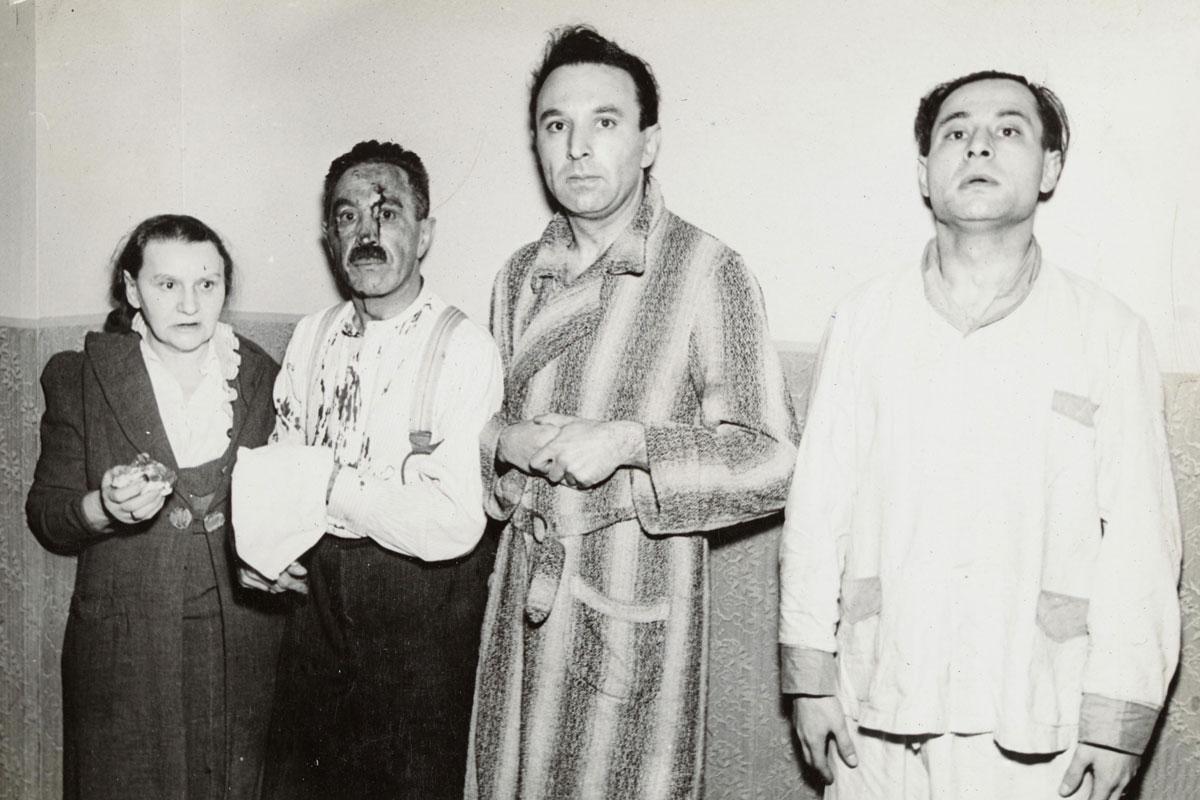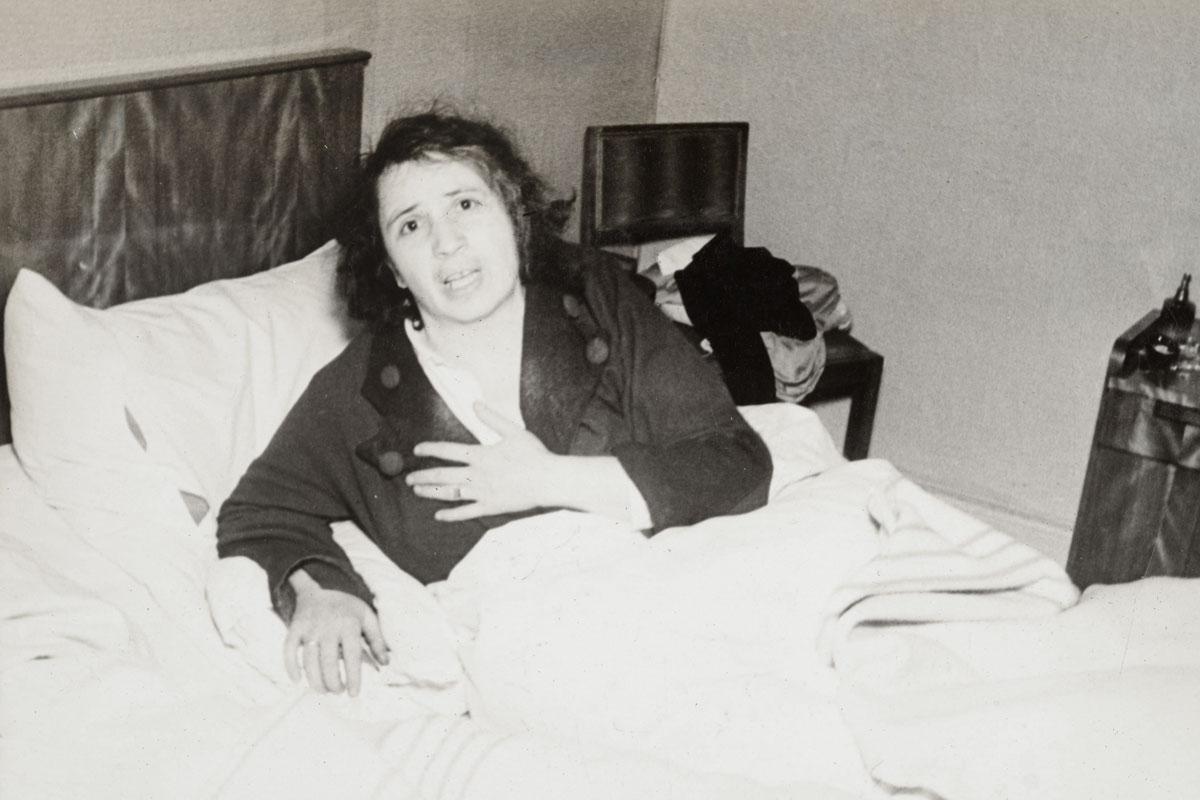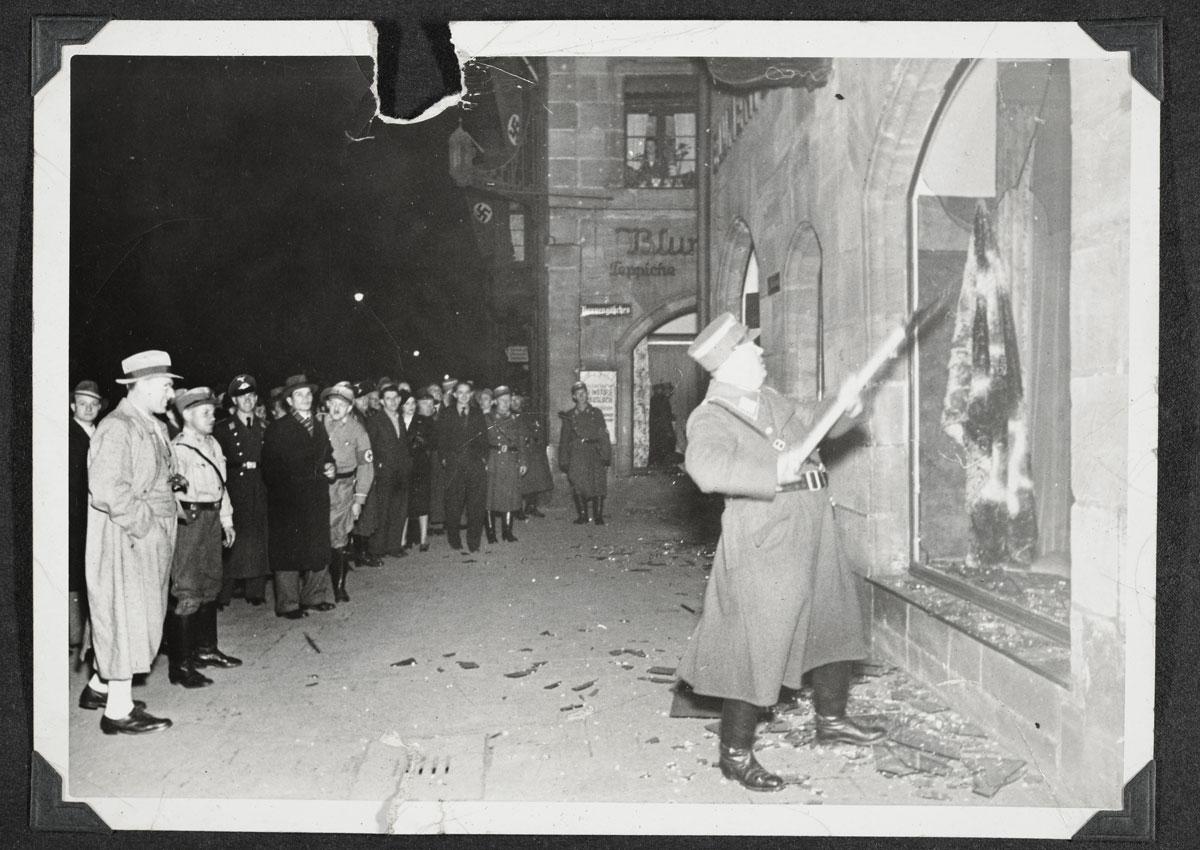
Yad Vashem Photo Archives, FA515/40


Yad Vashem Photo Archives, FA515/19


Yad Vashem Archives, FA515/101

The attacks on the Jewish population in Germany and Austria in November 1938 are commonly referred to in English (and in many other languages, but not in German) as Kristallnacht, or the Night of Broken Glass, alluding to the shattered windows of the many Jewish homes, synagogues, shops and other Jewish institutions spread throughout the German cities.
The term itself has a complicated history. Following the events of November 1938, various names appeared in Jewish accounts such as: "Murder Week", "Grynszpan Affair", "Glassed Thursday" and "Kristallnacht". The name Kristallnacht was not officially adopted by the Nazis, but probably developed among locals in Berlin, where the term was more common at the time.
There was no official terminology for the attacks in the aftermath of the war either. While the official term in Communist East Germany for the events was "The Fascist Pogrom", the word Kristallnacht was popularized in the West. However, during the '80s opponents to its usage favored the term "November Pogrom".
The term Kristallnacht is also problematic for historical and moral reasons. Historically speaking, the attacks on the Jewish population peaked on the night of 9-10 November, but continued in some places up 12 and even 13 November. The attacks therefore cannot be restricted to one night.
Secondly, for some the word Kristallnacht is morally problematic, partly because of its cynical overtones. More importantly, perhaps, the term also focuses on one aspect of these attacks, which for many was not the most significant one: the assault on Jewish property. In the course of these events, some 90 Jews were murdered by the SS and by the rampaging mob, approximately 30,000 Jewish men were sent to concentration camps and Jewish women were raped. Subsequently, hundreds of Jews committed suicide, while hundreds more were murdered in the camps. The exact numbers vary depending on the research, but evidently damage to property was just one aspect of these atrocities.
One can imagine the suffering experienced by the German and Austrian Jews. After years of gradual disenfranchisement and persecution (or an abrupt change of circumstances in the case of Austria's Jews), there was one area in which Jews still retained autonomy – their homes and private spheres. These attacks violated that crucial space and rendered people even more vulnerable than before. This is particularly apparent in the photographs Yad Vashem received in September 2022, depicting the attacks on Jewish homes. These images are rare since most of the visual material from the attacks documents institutions going up in flames.
Jewish victims' accounts also underscore the violence as the most traumatic aspect of the events. A unique testimony written in December 1939 is housed in the Yad Vashem Archives. Hans Block, a lawyer and notary from Hanover, who immigrated to Haifa after his release from Buchenwald, wrote down his experiences in what is perhaps one of the earliest known survivor testimonies. In describing the destruction of property, it is evident that the most harrowing experience was not so much the lost buildings but rather Block's acquaintance with many of the perpetrators:
"They were young academics, lawyers and physicians. They were sons of well-respected businessmen, who will now forever shame the German people. I always remember the name of Sander, the jeweler who had a shop that he had stolen from Jews on the Steintor that is on Georgstr. He committed outright robbery. One of the leaders was the son of Göbelhoff, the merchant who had a hat shop on the corner of Georgstr. and Goethestr. He plundered the shop that belonged to Salberg. This shop selling small gifts was under attack for a long while. Now he has made it the second location for his father's hat shop…
… As I was arrested, my wife went out into the street to see what was happening. At that moment, two SS men came and searched every corner of my house, from top to bottom. In their "favour" I can say that they did not steal every single thing in sight, as was done in other homes, but they did take a document that they found on my work desk. It was the official confirmation that I could work as a legal representative for the Jews, and my CV. Apart from that, they took all the money they could find, including breaking open my children's piggy banks. They broke into the cupboard and took out a box containing securities. They left the worthless box behind. They also took a ruby ring that my father had given my mother during their engagement."
Block also described the violence perpetrated against the arrested Jews:
"We were taken to a closed entrance of the Tivolistr. train station. Young SS men were standing there. They hit us with their sticks and shouted 'Go to Palestine' as we went downstairs"
After his arrest in Hannover, he was taken on a train to Weimar, and from there on a bus to Buchenwald:
"Buses were driving in front of us and now terrible scenes took place. The SS commanders ordered "onboard" and we were immediately beaten with clubs. I ran quickly onto the bus and saw the many beaten Jews on the floor. I was able to help the teacher Levysohn, who had been beaten, to go on board the bus. The 72-year-old merchant Hermann Blumenthal, who was with me in the cell in Hannover, fell and hit his head on the side of the bus. He now had an open wound above his nose and his eyes were shut. Dr. Berkowitz was struck again and again although they were repeatedly told that he had been severely wounded during the war. They hit him on his prosthesis."
Recalling the acts of murder in Buchenwald, Block wrote:
"Very near me was that man with the fraying nerves. He was from Silesia. He was gradually losing his sanity and repeated his story over and over. He was apparently the owner of a big company that he had had to relinquish following a Nazi order. He related repeatedly how he had succeeded in reaching an agreement regarding the price of the business and its commodities. Only an agreement with his staff remained to be concluded and he was sure that he would succeed in doing this. He once again told his story as a drunken SS man came inside. The man from Silesia, who was losing it, really believed that the SS man had come to hear his story. He told him the entire story once again and said "Mr. Scharführer (an SS rank), you can trust me that I will reach an agreement with my staff." The SS man tried to shrug him off but he started telling his story again. Then the SS man took him by force, threw him out the door, and shot two bullets at him. That poor man, who had lost his sanity over the selling of his business, now lay dead."
Historian Wolf Gruner argues that the violence against people inside their own homes was a one of the main factors leading many Jews to take their own lives or emigrate from Germany, yet these stories tend to remain overlooked or forgotten (see: chapter two in New Perspectives on Kristallnacht: After 80 Years, the Nazi Pogrom in Global Comparison). Therefore, when discussing the events of the November Pogrom, or any other term describing these atrocities, telling the story from the victims' perspective can help shine a spotlight on these harrowing experiences.









